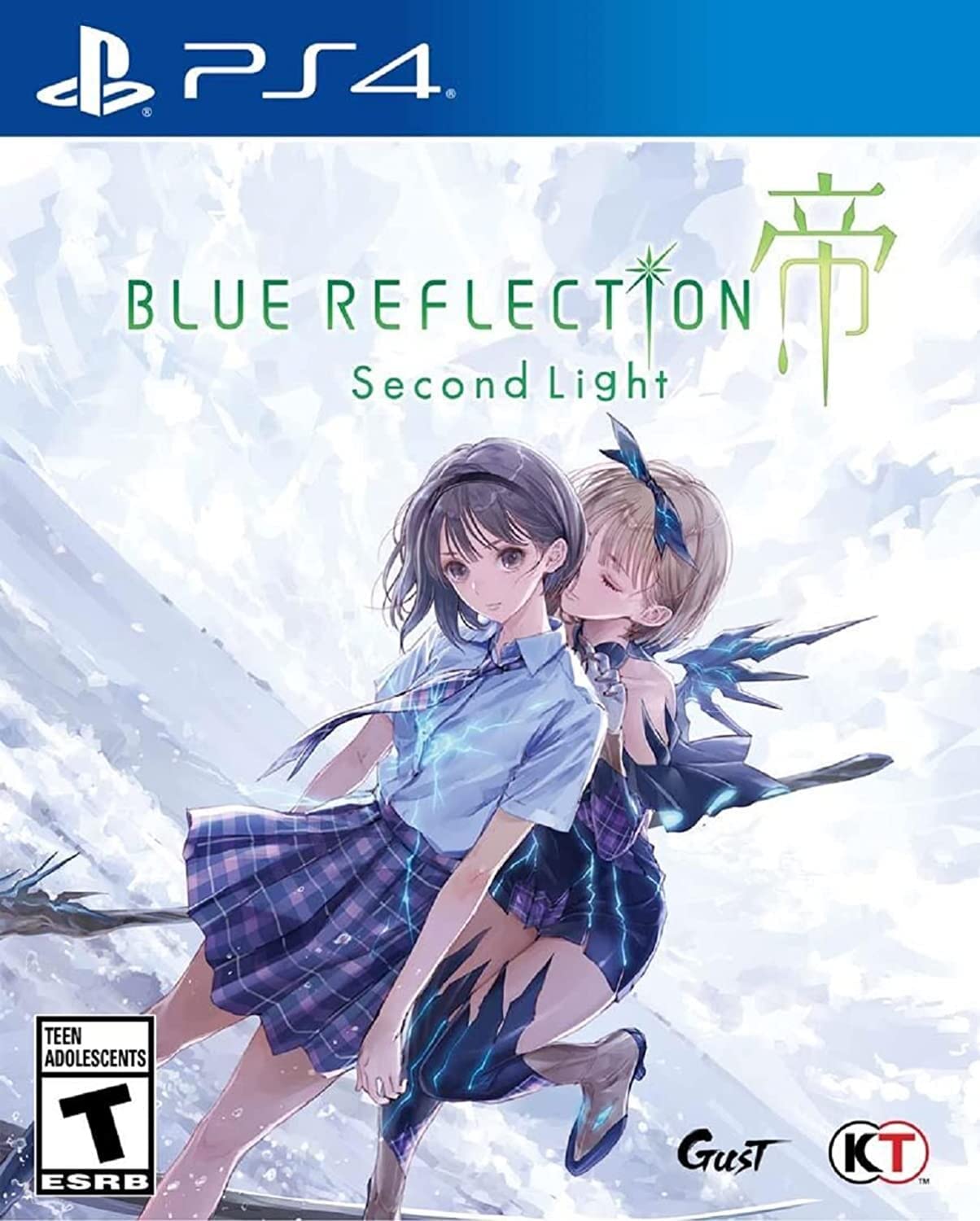Blue Reflection: Second Light
Developer: Gust
Publisher: Koei Tecmo
Platforms: PlayStation 4, PlayStation 5 (Reviewed), PC, Switch
Release Date: Available Now
Price: $59.99 – Available Here
Overview
Sometimes a video game comes along and, despite being fairly good in its own right, will have practically no chance of ever seeing a sequel or follow-up release. When Blue Reflection released back in 2017 it was a rough but unique enough RPG that was different from the norm but as years passed it seemed like that would be the last we would see from Gust’s newest series. Then it was revealed that not only would an anime spin-off air in Japan but a sequel would be released worldwide alongside a mobile game currently being developed it came as quite a surprise. So now that Blue Reflection: Second Light has arrived against all expectations, has this RPG been polished up?
Story
One day when traveling to school a high school girl by the name of Ao Hoshizaki appears to drop her phone and is suddenly transported to a strange empty school surrounded entirely by water. With no idea how she arrived there, Ao finds three other girls who have been living there for an unknown amount of time already but the problem is, no one knows where they are or even if there is a way out. To make matters worse, only Ao has any memories of her time back in the normal world as the rest of the girls have no memory of their lives in the normal world.
With the mysteriously empty school still containing everything the girls need to survive and a strange assistant robot chiming in from time to time, it is clear that something strange is happening but when a conversation Ao has with one of the three girls manages to stir up a potential memory a potential way forward appears. The girls find that the “Heartscape” that has been created off in the distance might be the home to dangerous monsters but also is home to the memories of the person it belongs to. With a chance to remember who they once were in front of them, the girls risk the danger in front of them if it means solving the mysteries of the strange school and finding their way back home.
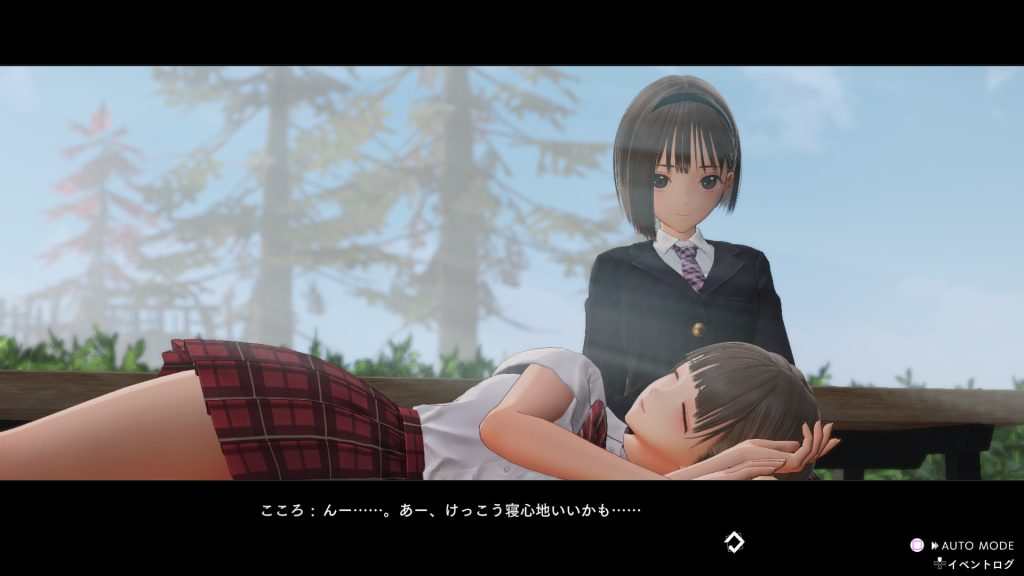
Now it must be said first that while playing the original Blue Reflection and, to a lesser extent, the anime Blue Reflection Ray aren’t really necessary to get the most out of the events that happen in Blue Reflection: Second Light there are a number of characters and some plot points that will tie into these previous entries though the game does try its best to try and make the connection for players who haven’t been with the series from the beginning. That being said, there are a number of early events that those familiar with the original will be able to understand and characters that will be recognizable far earlier than they would be for newcomers.
Blue Reflection: Second Light splits its storytelling into two fairly even parts. Players will find a “slice-of-life” style of storytelling whenever they are spending time at the school interacting with the other girls as Ao as they talk about their various dreams, learn more about who they are as people, and simply have fun with the various facilities while also going on “dates” to improve Ao’s relationship with the various characters. This side of the story is fairly enjoyable and very cute and cozy as the characters are handled quite well, especially as players learn more about them through unlocked memories or as additional characters begin to appear within the school.
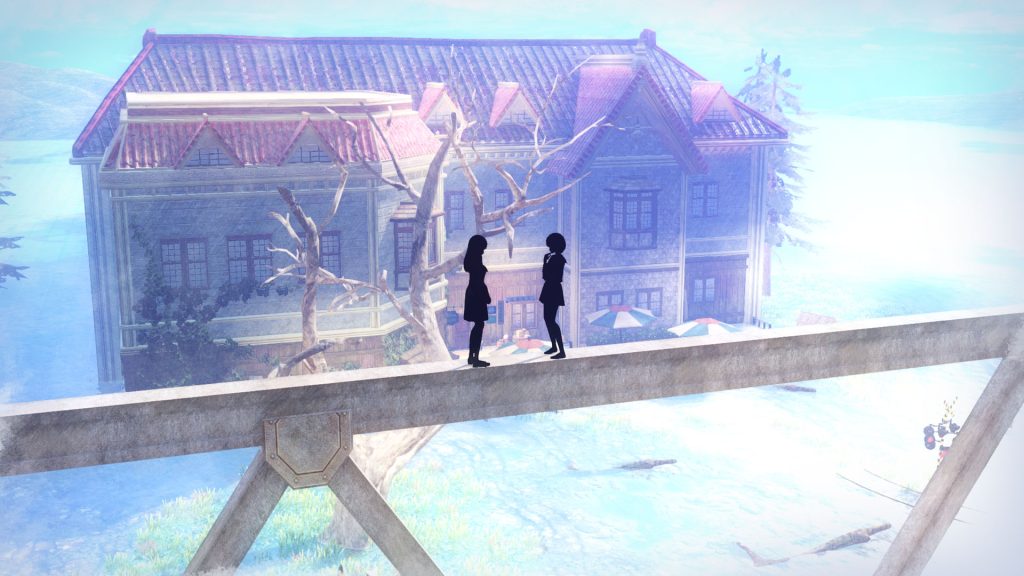
The other part of Blue Reflection: Second Light‘s storyline is told whenever the players venture into one of the many Heartscape dungeons that represents each girl. There is generally a noticeable shift in tone whenever players explore as many of the memories that they uncover while traveling a Heartscape tend to be negative ones that characters will instead need to overcome. Along these same lines the core storyline generally advances everytime the players advance through a Heartscape successfully and while we can’t go into detail to avoid spoiling some of the more notable twists there is a solid storyline here that is supported well by how the characters are handled and the great balance the game strikes between plot and character interaction.
Gameplay
As players venture outside the school into a Heartscape they will find that these dungeons now have far more life and detail than they did in the first release. Each dungeon has a number of different stages that players must progress through, obstacles that must be navigated, and even some that can only be removed with a specific item that is usually obtained after clearing the Heartscape entirely. When navigating through a dungeon players will gather various ingredients that can be used for the game’s crafting system as well as a number of memory fragments that range from being story based to unlocking additional crafting recipes.
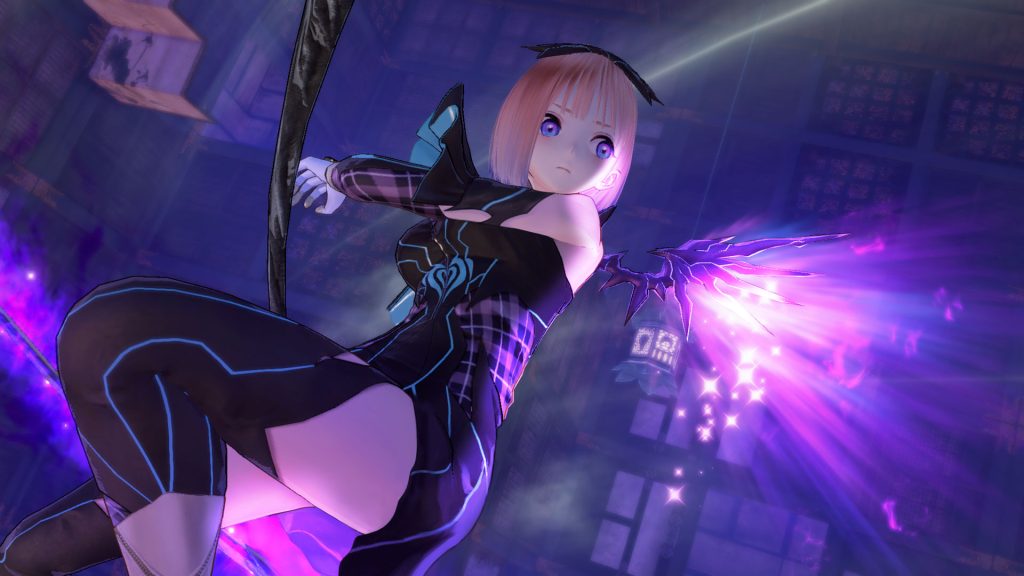
One new element introduced to the game’s exploration is a rather odd stealth system. Ao can now enter stealth at any given moment and can use this mode to not only see the detection radius of enemies but also enter combat with an increased knockdown chance if an enemy is sneak attacked. While this mechanic works fairly well in these instances, the forced stealth sequences are far more annoying than they are worth as players will immediately fail should they be detected in stealth and forced to restart a mission. These appear fairly rarely in the main storyline but a number of “requests” from the girls can trigger stealth sequences that rarely feel rewarding.
Once players enter combat they will find a hybrid turn-based system awaiting them as every character in the party, up to three at a time, and enemies will have their turns dictated by a timeline utilizing “Ether” points to dictate when characters can attack. Every attack takes a certain amount of Ether Points (EP) to unleash and some stronger skills require more than the initial 1000 that is available for a character. The more attacks a player lands the higher their Ether Level will raise, increasing the speed in which they earn Ether and the maximum amount they can hold with the third level automatically transforming a character into their Reflector form. Whenever a character is in their Reflector form they see a significant boost in stats, new skills that can be used to attack, buff, heal, or de-buff enemies, and of course utilize even more attacks in a row. When more than three characters are with the player a fourth “Support” character will be able to provide various buffs and can be swapped into combat with another character should the need arise.
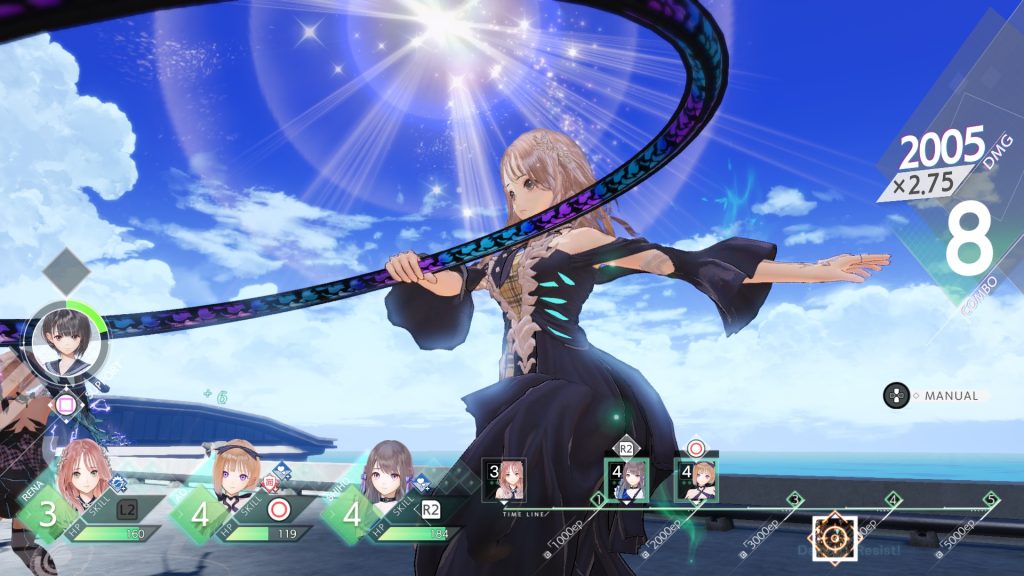
While fights can initially be rather slow at the start things quickly pick up the pace and can lead to some rather hectic fights at times, especially since players can choose to have two of their three party members automatically fight if they so wish, choosing to give commands when available using the triggers or manually entirely should they so choose. This is a useful tactic especially since enemy weaknesses can be targeted to not only knock them back in the attack list but also chain attacks together and potentially trigger a knockdown. Enemies in a knockdown state cannot attack and, in the case of larger enemies, have their barriers broken and trigger a special “One-on-One” battle between the foe and the attacking character. These battles are up closes and personal action fights that see players attacking, countering, dodging, and buffing all within a short time period where they can deal plenty of damage to an enemy if done correctly.
Back at the school players will find that they can use a fairly simple crafting system to create items that heal or buff the team in various ways as well as construct special school facilities from time to time. These school facilities provide a permanent buff for the team whenever they are placed in the school and also generally serve as a “date” spot for at least one or more characters. When Ao is at the school she will receive various requests from other girls to complete missions that will raise her bond with a character and also take these characters on dates around the school. These dates are cute and fairly simple affairs that reward the player with the game’s minimal form of equipment, Fragments, as well as talent points. Talents are limited unlocks that are different for every character and can provide a number of boosts to their stats as well as unlock new attacks as well, making the school interactions just as important for fighting as grinding levels.
Visuals & Audio
Gust is once again retaining the amazing art style that helped set the original Blue Reflection apart here as the pastel color palette is wonderful to behold. This is especially true thanks to just how amazing most of the game’s Heartscapes look as nearly every single one of them is unique in its own way and just as outlandish as one would expect from a game set in a mysterious land. It is worth noting that the game does have its fair bit of fanservice but it is rarely taken to a level that should bother most people as it is almost entirely optional.
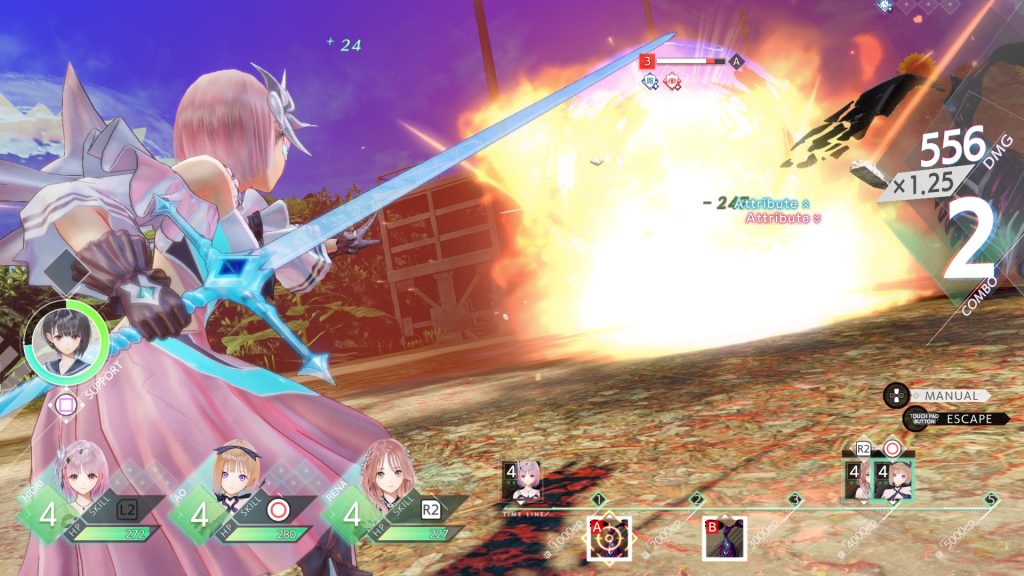
The soundtrack for the game features a great collection of light electric style tracks that work great for fighting as well as a solid mix of calmer music that fits the exploration of Heartscapes and time spent at the school. Once again it is worth noting that Blue Reflection: Second Light only features the original Japanese voice track but thankfully the voice actresses have all performed great for the characters they have been cast as, including returning characters.
Overall
Blue Reflection: Second Light builds upon the first game in many ways and is clearly a step forward for the series even if it still stumbles a bit here and there with a slow start and the troublesome stealth mechanic. Nearly every aspect of the game has seen an improvement and with a gorgeous presentation players will be able to enjoy a solid storyline filled with a great cast of characters in a RPG that isn’t afraid to try something a bit different.
Capsule Computers review guidelines can be found here.


